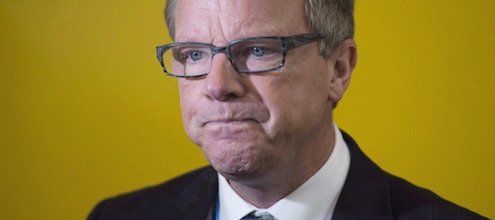
Why Saskatchewan should join the carbon-pricing club
Saskatchewan Premier Brad Wall agrees that all provinces need to do more to reduce greenhouse gas emissions. Yet he argues that carbon prices should not be used because they would hobble an already weak economy. He also argues that a better approach is to invest in the development of low-emissions technologies.
Mr. Wall is right to be concerned about the weakness of the economy, especially in Saskatchewan where low resource prices are causing serious pain. Done well, however, carbon pricing need not weaken the economy, and can actually improve it over the longer term. Several aspects about these policies may lead him to rethink his position.
It is a bad idea to increase taxes when an economy is weak. But carbon pricing need not lead to higher taxes overall and a larger government; instead, it can be an instrument of a smarter government that collects its revenues in a way more conducive to economic growth.
Carbon pricing in British Columbia
As in British Columbia, a carbon price can be revenue neutral, with every dollar of revenue returned to the economy through reductions in personal and corporate income taxes. Since 2008, the province has reduced its per-capita GHG emissions and its economic growth has outperformed that of the rest of Canada.
Mr. Wall might also be concerned about how carbon pricing would affect Saskatchewan’s households and the competitiveness of its businesses. These are commonly heard challenges, and for good reason. But careful use of carbon-pricing revenues can address them directly.
Carbon pricing in Saskatchewan
Saskatchewan’s electricity comes largely from coal-fired facilities. If carbon pricing drives up the price of electricity, won’t the policy be unfair to low-income households? The answer is no. A small share of the revenues from carbon pricing could be given back to the most vulnerable households. By doing so, all households still have an incentive to reduce their emissions, but the policy protects the purchasing power of the most vulnerable ones.
The same basic principle applies to business competitiveness. By returning some of the carbon-pricing revenues back to the most emissions-intensive companies, as is being planned with new policies in Ontario and Alberta, they won’t lose market share to their out-of-province rivals. Yet the carbon price still provides these businesses with a clear incentive to reduce GHG emissions.
A well-designed carbon price is actually a balanced policy, providing strong incentives to cut GHG emissions while also protecting household consumers and the competitiveness of companies in the emissions-heavy resource sector.
The province’s needed investments
Mr. Wall prefers clean-tech investments, such as in SaskPower’s carbon capture and storage facility at Boundary Dam. And such projects are certainly worth supporting: With an economical and scalable method of capturing GHG emissions, we could make a huge advance in addressing the problem of climate change. Such investments raise three important points, however.
First, investing in new technologies requires the use of public funds, most of which come from personal and corporate income taxes. It would be better to raise the funds with a carbon price, thus preventing the economic drag that comes from higher taxes.
Second, public investments in the development of new technologies are invariably risky; some will work well, others will fail miserably. A prudent investment portfolio includes a range of promising low-emissions technologies.
Third, investments in low-emissions technologies make the most sense as a complement to a carbon price, rather than as a substitute for it. A carbon price generates powerful incentives for both business and consumers, while science-minded entrepreneurs are induced to develop the better technologies that firms and households can then employ. If the goal is to develop clean technologies, a carbon price should be a core part of the policy framework.
GHG emissions in Saskatchewan are the fourth-largest among Canadian provinces, but in per-capita terms they are the highest in the country. The economy is heavily reliant on natural resources and is currently suffering. That’s why a well-designed policy that balances environmental and economic concerns is badly needed.
This piece was originally published in the Globe and Mail Opinion section on February 29, 2016.




Comments are closed.